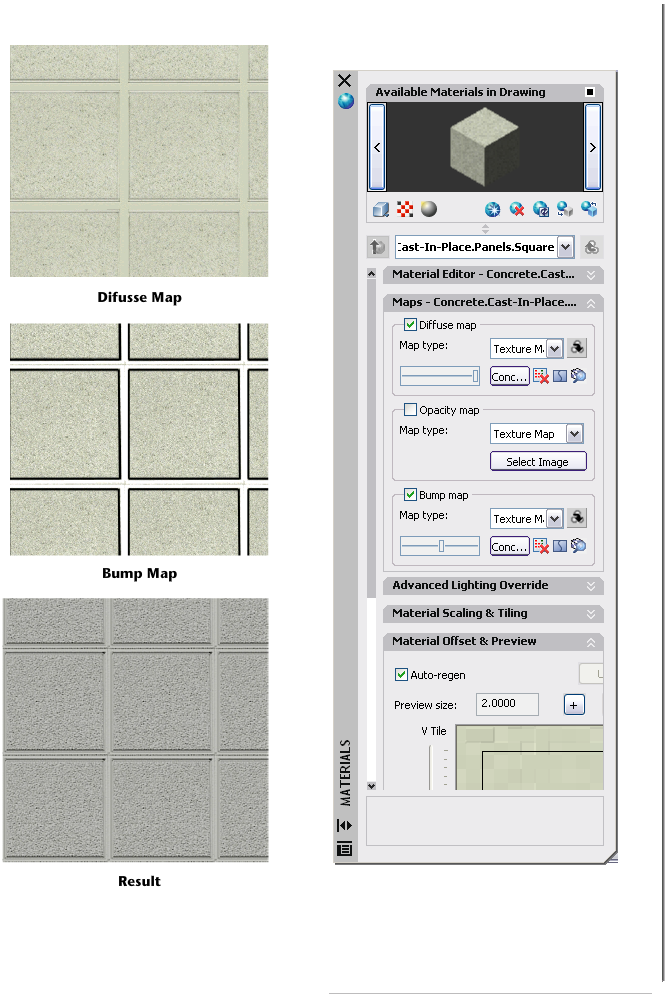A bump map simulates a bumpy or irregular surface.
You can select an image file or procedural maps to use for bump mapping. Bump mapping makes an object appear to have a bumpy or irregular surface. When you render an object with a bump-mapped material, lighter (whiter) areas of the map appear to be raised and darker (blacker) areas appear to be low. If the image is in color, the gray-scale value of each color is used. Bump mapping increases rendering time significantly but adds to the realism.
Bump mapping uses the intensity of the map to affect the surface of the material. In this case, the intensity affects the apparent bumpiness of the surface: white areas protrude, and black areas recede.
Use Bump maps when you want to take the smoothness off a surface, or to create an embossed look. Keep in mind, however, that the depth effect of a Bump map is limited. If you want extreme depth in a surface, you should use modeling techniques instead.
The Bump map slider adjusts the degree of bumpiness. Higher values render as higher relief and low values render as low relief.
The bumps are a simulation created by perturbing face normals before the object is rendered. Because of this, bumps do not appear on the silhouette of bump-mapped objects.
